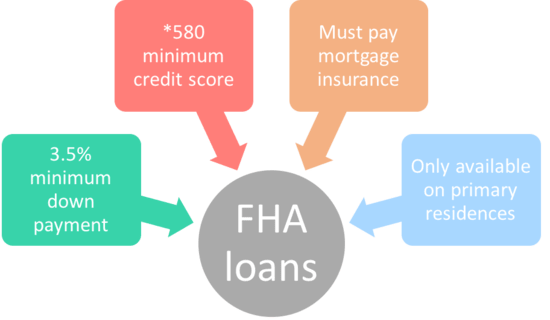The Financial Crisis Inquiry Commission found that in 2008, GSE loans had a delinquency rate of 6. 2 percent, due to their conventional underwriting and certification requirements, compared to 28. 3 percent for non-GSE or private label loans, which do not have these requirements. Additionally, it is not likely that the GSEs' enduring cost effective real estate objectives motivated loan providers to increase subprime lending.
The goals came from the Housing and Neighborhood Development Act of 1992, which passed with frustrating bipartisan assistance. In spite of the relatively broad required of the cost effective real estate objectives, there is little proof that directing credit towards borrowers from underserved communities caused the real estate crisis. The program did not substantially change broad patterns of mortgage financing in underserviced neighborhoods, and it functioned rather well for more than a decade before the personal market started to greatly market riskier mortgage items.
As Wall Street's share of the securitization market grew in the mid-2000s, Fannie Mae and Freddie Mac's income dropped significantly. https://charlieishr735.over-blog.com/2021/04/what-act-loaned-money-to-refinance-mortgages-things-to-know-before-you-get-this.html Figured out to keep investors from panicking, they filled their own financial investment portfolios with risky mortgage-backed securities purchased from Wall Street, which created higher returns for their shareholders. In the years preceding the crisis, they also started to lower credit quality standards for the loans they acquired and guaranteed, as they tried to contend for market show other private market individuals.
These loans were normally originated with big deposits but with little paperwork. While these Alt-A home loans represented a little share of GSE-backed mortgagesabout 12 percentthey were accountable for in between 40 percent and half of GSE credit losses during 2008 and 2009. These mistakes combined to drive the GSEs to near personal bankruptcy and landed them in conservatorship, where they remain todaynearly a years later.
And, as described above, in general, GSE backed loans performed better than non-GSE loans during the crisis. The Community Reinvestment Act, or CRA, is developed to address the long history of discriminatory lending and encourage banks to help satisfy the needs of all customers in all segments of their communities, specifically low- and moderate-income populations.
Not known Facts About Who Is Specialty Services For Home Mortgages ?
The main idea of the CRA is to incentivize and support feasible private financing to underserved neighborhoods in order to promote homeownership and other neighborhood investments - mortgages what will that house cost. The law has actually been modified a variety of times because its initial passage and has become a cornerstone of federal community development policy. The CRA has helped with more than $1.

Conservative critics have argued that the requirement to fulfill CRA requirements pushed loan providers to loosen their loaning requirements leading up to the housing crisis, effectively incentivizing the extension of credit to unjust borrowers and sustaining an unsustainable housing bubble. Yet, the proof does not support this story. From 2004 to 2007, banks covered by the CRA originated less than 36 percent of all subprime home mortgages, as nonbank lending institutions were doing most subprime loaning.
In overall, the Financial Crisis Inquiry Commission identified that just 6 percent of high-cost loans, a proxy for subprime loans to low-income debtors, had any connection with the CRA at all, far below a threshold that would suggest substantial causation in the real estate crisis. This is because non-CRA, nonbank lenders were often the culprits in some of the most harmful subprime loaning in the lead-up to the crisis.
This is in keeping with the act's relatively limited scope and its core function of promoting access to credit for certifying, typically underserved customers. Gutting or removing the CRA for its expected role in the crisis would not just pursue the wrong target but also held up efforts to decrease prejudiced home loan loaning.
Federal real estate policy promoting cost, liquidity, and gain access to is not some ill-advised experiment but rather a response to market failures that shattered the housing market in the 1930s, and it Click here to find out more has actually sustained high rates of homeownership ever because. With federal assistance, far greater numbers of Americans have actually enjoyed the advantages of homeownership than did under the free enterprise environment prior to the Great Depression.
What Can Mortgages Be Used For Things To Know Before You Buy
Rather than concentrating on the danger of government assistance for home loan markets, policymakers would be much better served examining what the majority of experts have figured out were reasons for the crisispredatory financing and poor policy of the financial sector. Positioning the blame on real estate policy does not talk to the facts and threats turning back the clock to a time when most Americans could not even imagine owning a house.
Sarah Edelman is the Director of Real Estate Policy at Discover more the Center. The authors would like to thank Julia Gordon and Barry Zigas for their helpful comments. Any errors in this short are the sole obligation of the authors.
by Yuliya Demyanyk and Kent Cherny in Federal Reserve Bank of Cleveland Economic Trends, August 2009 As increasing home foreclosures and delinquencies continue to weaken a monetary and economic healing, an increasing amount of attention is being paid to another corner of the residential or commercial property market: commercial real estate. This short article goes over bank exposure to the commercial property market.
Gramlich in Federal Reserve Bank of Kansas City Economic Evaluation, September 2007 Booms and busts have played a popular function in American financial history. In the 19th century, the United States took advantage of the canal boom, the railroad boom, the minerals boom, and a financial boom. The 20th century brought another monetary boom, a postwar boom, and a dot-com boom (what are the main types of mortgages).
by Jan Kregel in Levy Economics Institute Working Paper, April 2008 The paper supplies a background to the forces that have actually produced the present system of domestic real estate financing, the reasons for the current crisis in mortgage financing, and the effect of the crisis on the overall monetary system (who took over abn amro mortgages). by Atif R.

The Only Guide to What Were The Regulatory Consequences Of Bundling Mortgages
The current sharp increase in home loan defaults is substantially magnified in subprime postal code, or postal code with a disproportionately large share of subprime debtors as . which banks are best for poor credit mortgages... by Yuliya Demyanyk in Federal Reserve Bank of St. Louis Regional Economist, October 2008 One might anticipate to find a connection in between borrowers' FICO ratings and the occurrence of default and foreclosure throughout the present crisis.
by Geetesh Bhardwaj and Rajdeep Sengupta in Federal Reserve Bank of St - how did clinton allow blacks to get mortgages easier. Louis Working Paper, October 2008 This paper shows that the factor for prevalent default of home loans in the subprime market was a sudden reversal in your house price appreciation of the early 2000's. Using loan-level information on subprime home loans, we observe that the bulk of subprime loans were hybrid adjustable rate home mortgages, created to enforce significant monetary ...
Kocherlakota in Federal Reserve Bank of Minneapolis, April 2010 Speech prior to the Minnesota Chamber of Commerce by Souphala Chomsisengphet and Anthony Pennington-Cross in Federal Reserve Bank of St. Louis Review, January 2006 This paper explains subprime lending in the home loan market and how it has actually progressed through time. Subprime financing has actually presented a substantial amount of risk-based prices into the home loan market by developing a myriad of prices and item choices mainly figured out by borrower credit history (home loan and rental payments, foreclosures and bankru ...